Ponuđeno je trinaest igri oblika, priča, komentara, doživljaja. Autori instinktivno uviđaju da scena, događaj, motiv nije samo oblik, već imaginarni prostor ispunjen osobnom sumnjom. Individualni doživljaj ostvaruje se elementima likovne igre svjetlom, u kojoj ovi autori dosjetljivo i ponekad provokativno uvode u rad vizualnu naznaku propitivanja
Eugen Borkovsky
TRINAESTORO / THIRTEEN
Clive Bevan, Lizzie Brown, Mary Davis, Fernando, Tony Hale, Polly Hancock, Avril Harris, Gordana Johnson, David Lewis, Andrew Ridley, Norman Smith, Roger Towell, Duncan Unsworth
London – Grožnjan/Grisignana
Kustos: Eugen Borkovsky
otvorenje / apertura: petak / venerdì, 3. XI. 2023, u 19.00 h
Gradska galerija Fonticus Grožnjan / Grisignana
IZMEĐU OBLIKA I DOŽIVLJAJA
Već je napisano kako likovna i sve ostale umjetnosti imaju u sebi ugrađen komunikacijski segment, bez obzira radi li se o monologu ili ponuđenom dijalogu. Povijest umjetničke prakse može se svesti na dekodiranje poruka koje su upućene na razumijevanje i iščitavanje poznatom ili nepoznatom promatraču. Na tragu ovih postulata,i ove godine trinaest autorica i autora vezanih za londonsku likovnu scenu nudi nizove autorskih fotografija. Sve pojedine kolekcije radova su homogene na likovni ili smisleni način.
Motivi su u rasponu od portreta/figure/akta, preko režiranih ili spontano zapaženih predmeta, do urbanog ili prirodnog krajolika. Ovi poliptisi, direktno ili indirektno, evociraju recentno vrijeme u kojem su nastali. Jer, svjedočimo periodu forsiranja uniformiranosti, jednoobraznosti. Fotografi, preko osobnih bilješki, propituju poslušnost, podobnost, pristanak na nametnute načine ponašanja, mišljenja i viđenja.
U bliskom prošlom vremenu, agresija diktata je postala očita na području zdravstva. Stanovništvo je, pod ucjenama, slušalo režirane objave koje su naređivale, bez oslonca u zakonodavstvu – zabrane sloboda. Danas situaciju te konstruirane problematike, kontrolu mišljenja, zamjenjuje nametanje podrške dvjema državama. Kroz obje krizne zemljopisne lokacije pokušava se čitav Svijet podvrći podvali koja se zove demokracija, ali koja se transformirala u podložnost multinacionalnim kompanijama kojima je jedini cilj profit, bez obzira na cijenu pojedinog ljudskog života. Zabrane različitih mišljenja/stavova, zabrana disanja čistog zraka, ometanje putovanja, otkrile su agresiju kapitalizma. Srednji sloj stanovništva više ne postoji. Postoje proli koji budzašto prodaju svoju snagu i energiju. Mega-postrojenja, religijske institucije, prodajni centri još djeluju. Krupni kapital je ostao nedodirnut. Čini se da se umjesto demokracije nameće demokratura, izvedenica od riječi demokracija i diktatura.
Ovdje je ponuđeno trinaest igri oblika, priča, komentara, doživljaja. Autori instinktivno uviđaju da scena, događaj, motiv nije samo oblik, već imaginarni prostor ispunjen osobnom sumnjom. Individualni doživljaj ostvaruje se elementima likovne igre svjetlom, u kojoj ovi autori dosjetljivo i ponekad provokativno uvode u rad vizualnu naznaku propitivanja. Zahvaljujemo im na uprizorenjima i upozorenjima.
Eugen Borkovsky, X. 2023.
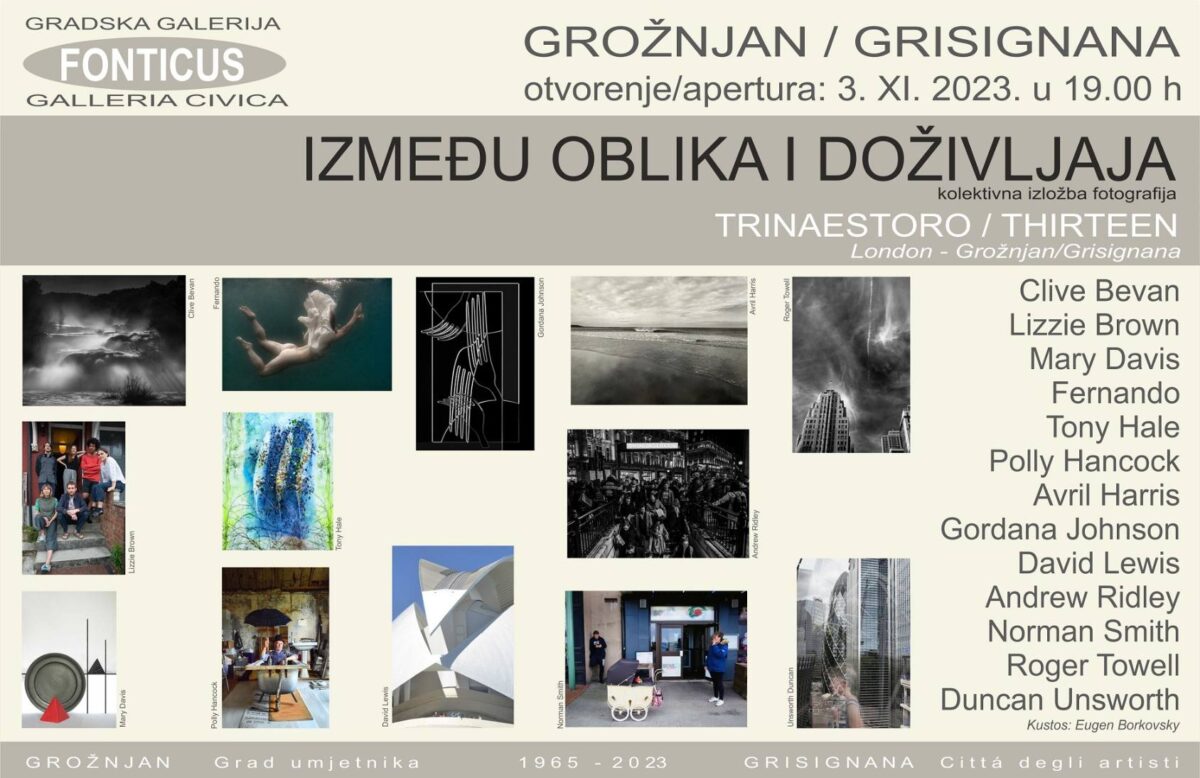




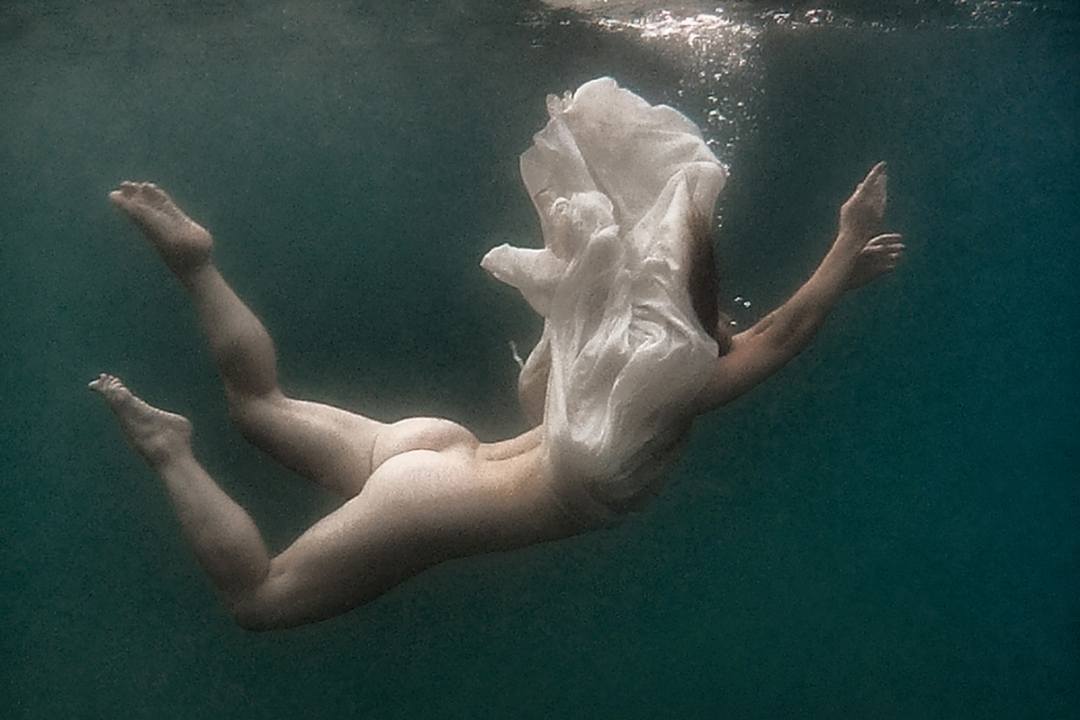
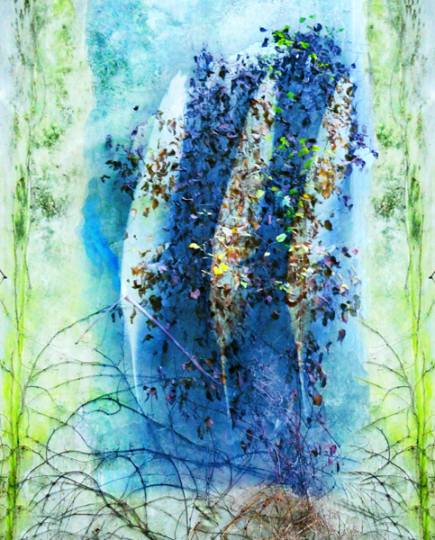

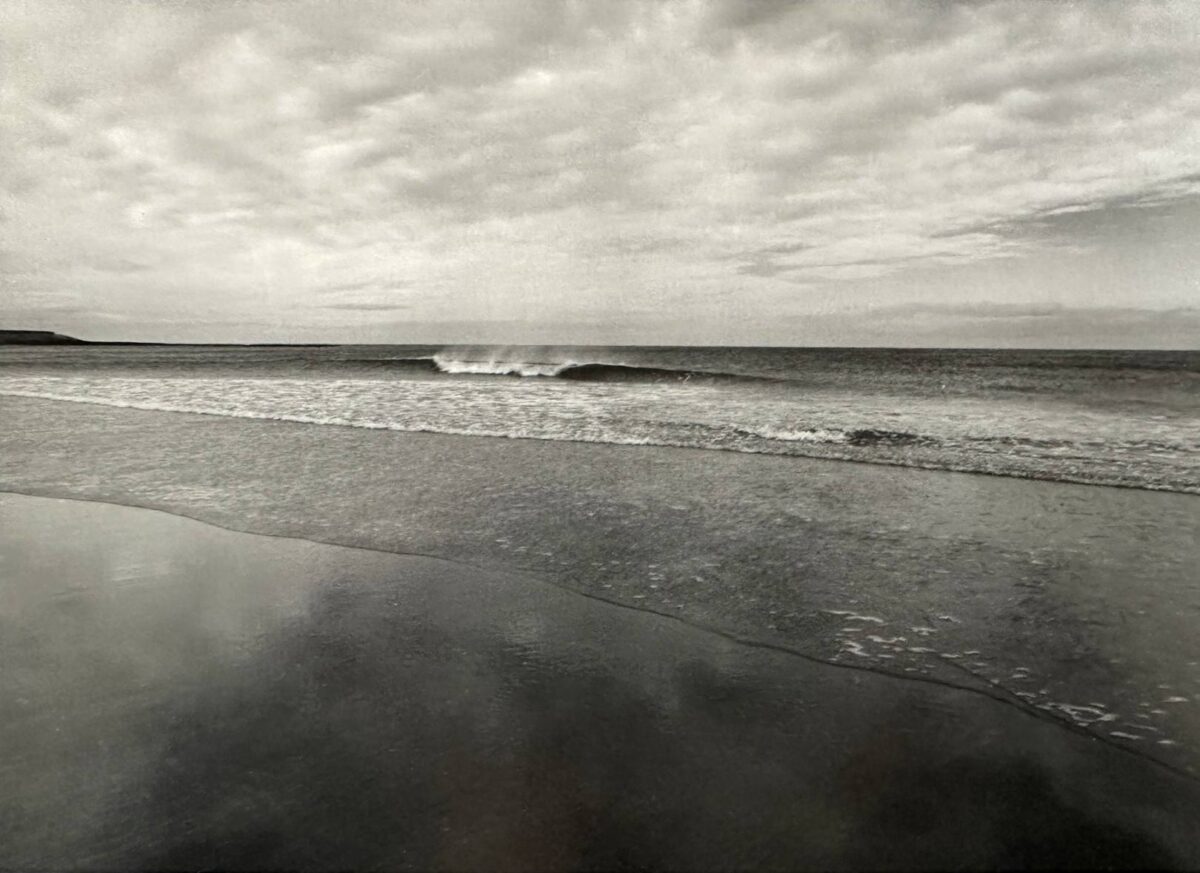
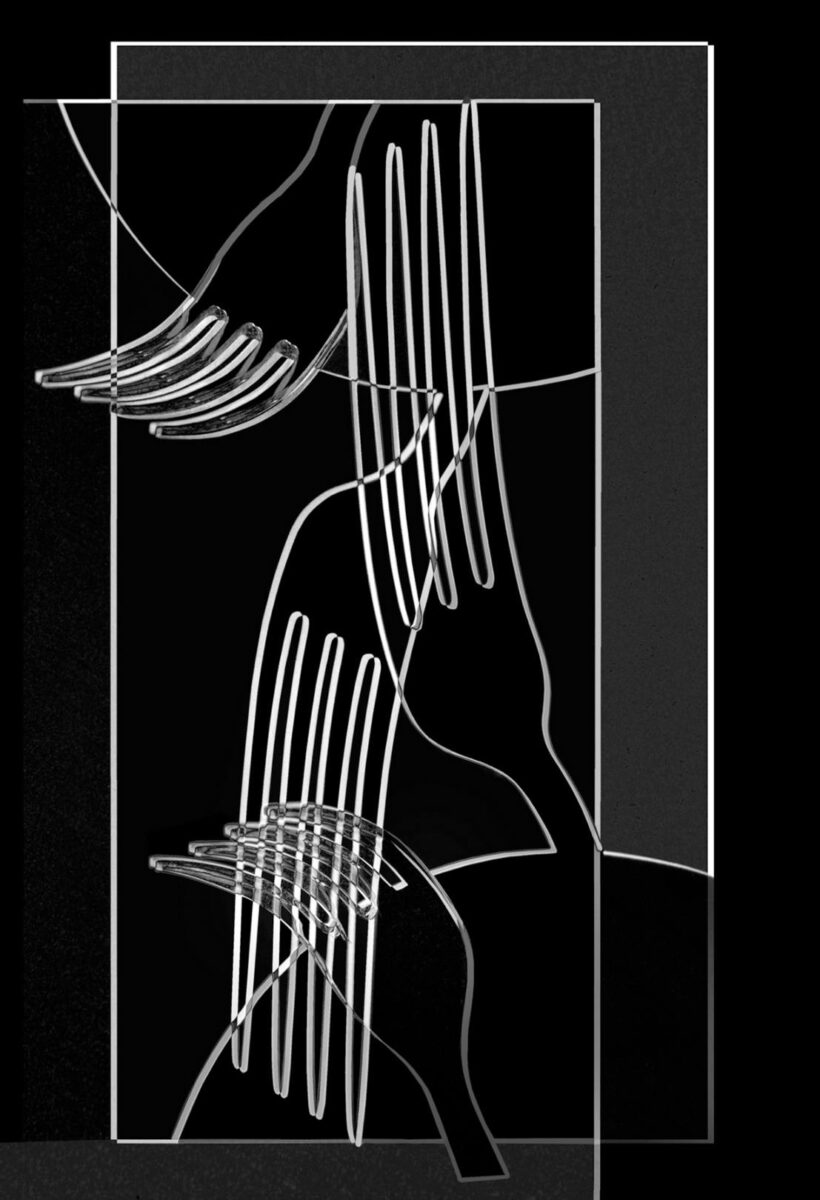
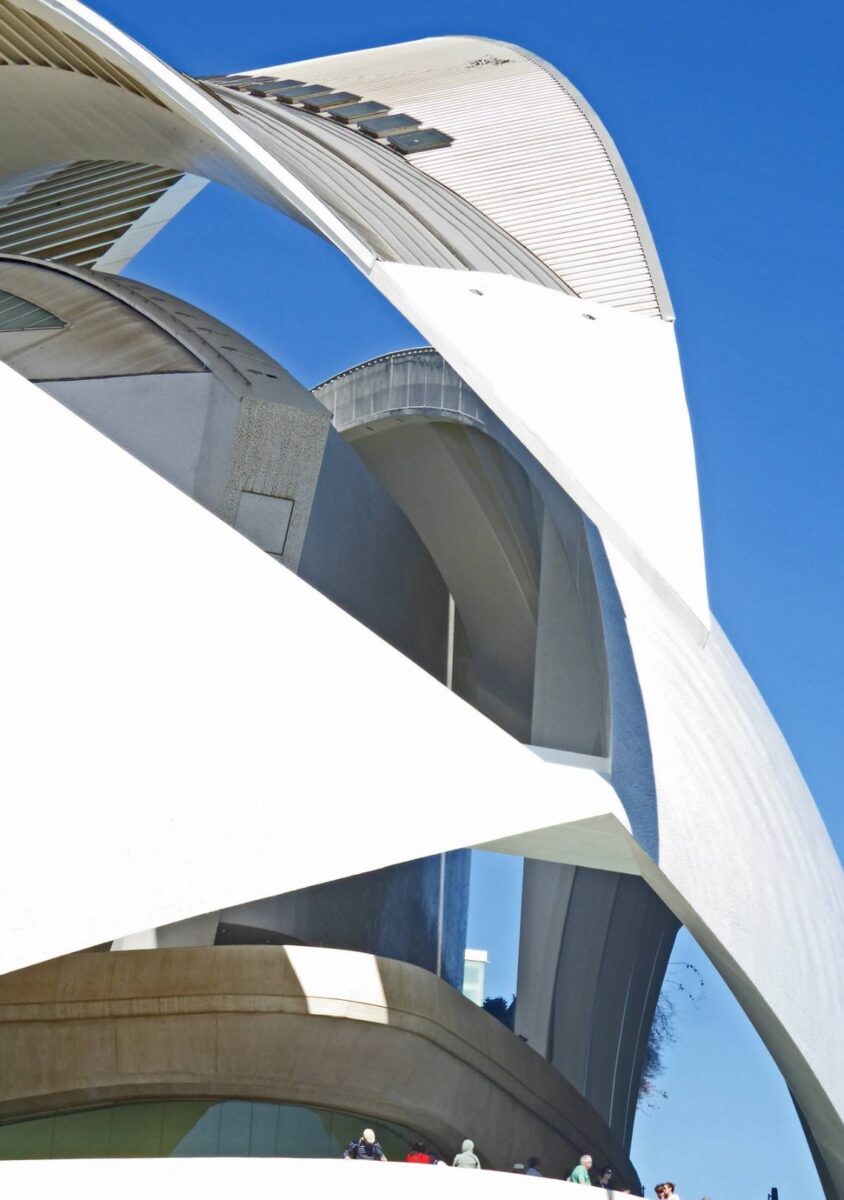



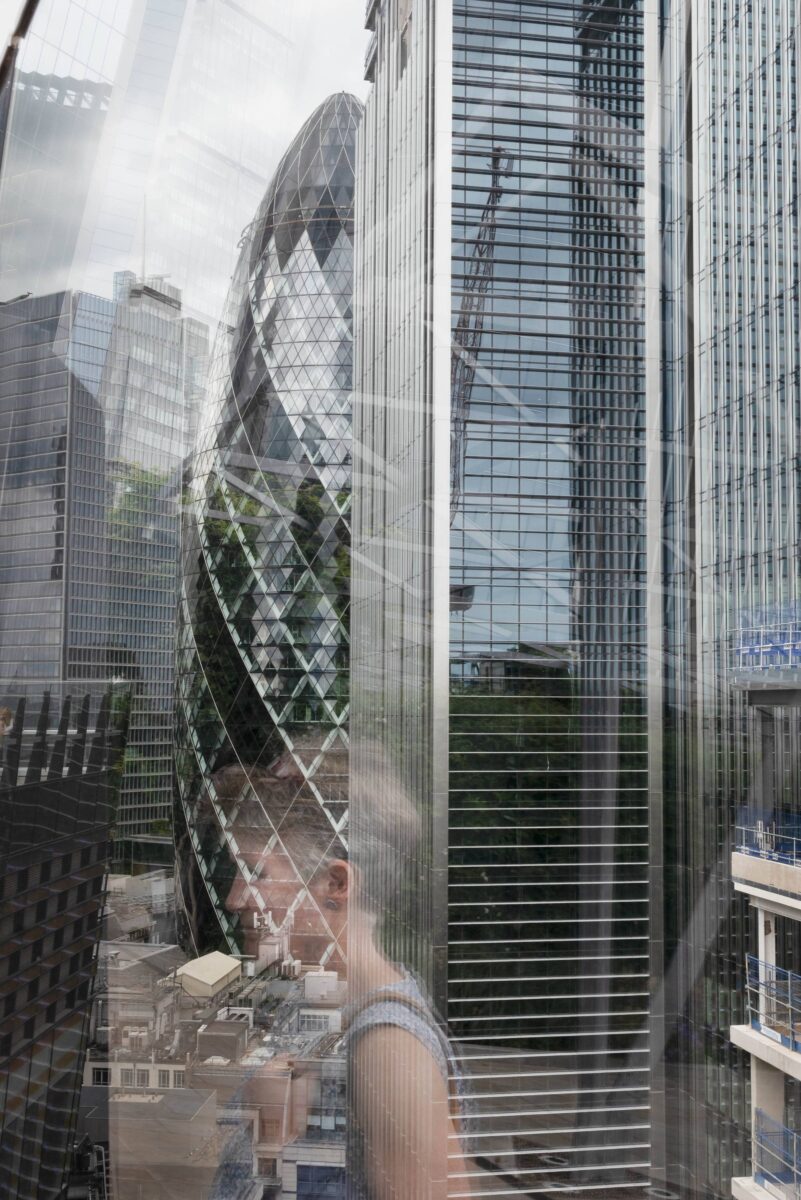
Clive Bevan predstavlja bilješke svjetlom uzimajući kao motiv vodu, točnije, živahnije situacije vodotoka: slapove. Po nazivima radova, autor je fotografije zabilježio na rijeci Krki. Pred nama je heterogeni niz: od detalja prelijevanja do širih panoramskih motiva. Bilježenje žive prirode, posebno nekih njenih fenomena – uporni sraz/igru tekućine i tvrdog elementa, nije lako bilježiti bez dokumentarne note. U našem slučaju autor izostavlja kolor pa svi radovi dobivaju memorijsku notu. Crno-bijelom fotografijom autor postiže naglašenije kontraste te bogatstvo međutonova.
Ponegdje se usredotočuje na detalj odnosa vodenog toka, kamenih barijera i biljaka. Autor nastoji bilježiti tijek, živost vode, a ne samo njenu sliku. Na detaljima, isječcima to i uspijeva. Kod panoramskih snimaka dojam amorfnosti, mekoće, ali i snagu vodenog tijeka postiže hvatanjem maglica i kapljica raspršivanja medija.
Lizzie Brown predstavlja seriju fotografija određenu dokumentaristički. I ona je u Britaniji bila zarobljenica agende o gripi s reklamom. Autorica predstavlja bilješke tipičnih situacija tijekom nametnutih zabrana. Tu su kombinacije grupa ljudi ili samaca koji su bili primorani ne izlaziti ili se po/dati neprovjerenim medikamentima.
Njene fotografije nose ideju portretnih situacija. Većina su grupne, s dvije i više osoba, a neke predstavljaju pojedince/ke. Autorica u kadar ne obuhvaća samo osobe, već i segmente okruženja. Prednjače domovi, najčešće predvorja i ulazi u stambene jedinice. U građanski određenom miljeu, pojavljuju se cijele porodice, bilo u obliku diade, generacijski raznolike grupe, ali i osobe koje žive same.
Svi zabilježeni fotografskim medijem znaju da će biti fotografirani, ali većina ostaje u spontanim pozicijama. Rijetko tko pažljivo bira pozu za portretiranje, kao što su se u vremenu začetka fotografskog medija modeli jednostavno postavili i umirili pokrete.
Autorica je zabilježila šezdeset situacija u svojoj ulici. Ona objavljuje projekt, a komunicira sa stanovnicima, susjedima putem WhatsApp grupe Road. Snimke su se dijelile, a ljudi prepoznavali. Kasnije, Zoe Lester, grafička dizajnerica, pomaže autorici oblikovati banner, koji je na jednoj površini skupio svu foto-dokumentaciju. Tako se razvio osjećaj zajedništva u izolaciji. Nametnuto stanje time je bilo do neke mjere ublaženo. Ovo je, u širem smislu, upozorenje kako je ljudski duh ipak nesalomljiv, bez obzira na agresiju vladajućih.
Mary Davis predstavlja niz fotografija režiranih scena. Sve su apstraktne, a predstavljaju kombinacije geometriziranih predmeta. Tu su u interakciji prikazane linijske, okrugle, kvadratne plošne, piramidalne forme. Neki su od nabrojenog plošni, a neki trodimenzionalni. Osim oblika, prisutan je znatan, ali odlično usklađen kolor.
Iako neke od dijelova kompozicija može raspoznati kao posebne predmete, autoričini sklopovi nadmašuju takvu senzaciju jer ju pobjeđuju scene odnosa elemenata. Zapravo, autorica kao da propituje našu percepciju provocirajući memoriju. Tako odmah zanemarujemo moguće prepoznavanje i sastavnice doživljavamo kao jedinstvenu likovnu situaciju.
Stabilna kompozicija ostvarena je kombiniranjem elemenata, a oslonac je i izbor boja. Kompozicije, prije pokretanja fotografskog postupka, mogu biti artefakti, pa ovaj niz možemo doživjeti i kao dokumentiranje konceptualnih konformacija. Majstorstvo, maštovitost, umjerenost i promišljanje kombinatorike oblika odlike su ovih fotografskih bilješki.
Voda je uvijek izazovan motiv. Najčešće se vizualno oslanjamo na površinu vode, njen tijek u obliku rijeke, potoka, slapa ili morskog, primorskog pejzaža. Ovaj medij zanimljiv je i vizualnom istraživaču Fernandu. Njegova ponuda niza fotografija predstavlja podmorje. No, Fernando ne bilježi situaciju koju nalazi u vodi samoj – kao elementu u srazu s obalom ili dnom, već u medij uvodi ljudski motiv. Radi se o ženskoj osobi, njenom obnaženom tijelu koje postaje glavni motiv ove serije fotografskih bilješki.
Umjetnik i model ulaze, zaranjaju u tekućinu. Estetika nagog tijela u mediju vode, mora, drugačije se doživljava. Tijelo lebdi i kreće se bitno drugačije čak i od vješte balerine na suhom. Mijenjaju se gravitacijski odnosi pa u tom drugom elementu, osim doživljaja osobe koja roni ili pliva, i odnosi tijela ili dijelova tijela poput kose, ili predmeta poput tekstila, dobivanju neuobičajene putanje, pozicije.
Iako se radi o nagom tijelu, u pitanju nije erotika, već svojevrsni slobodni „let“ u tekućoj tvari. Kroz niz snimaka ono se mijenja, od aktivnijih do pasivnih pozicija. Autor koristi i situacije koje su određene boravkom ljudskog bića u tekućem mediju, kao što je razigrano kamenito tlo/dno ili pak mjehurići zraka koje osoba uzrokuje disanjem, izdahom.
Fernando kaže: „Ispod površine mora krije se drugi svijet. Strani svijet, u kojem smo mi autsajderi. Ne pripadamo tamo, ne možemo tamo preživjeti. Mi smo samo gosti…“
Tony Hale predstavlja radove koje karakterizira snažan kolor i razigrana, ali stabilna kompozicija. Motivi su biljni oblici kojima se autor poigrava. On ne bilježi pejzaž, već se usredotočuje na manje isječke, grupe lisnatih i/ili cvjetnih detalja. Autor iz prirode izdvaja pojedinosti te ih obrađuje kompozicijski i koloristički. Svjetlosnim manipulacijama na senzibiliziranoj podlozi proizvodi efekte koji naginju slikarskom pristupu. Tako neki od radova više sliče rezultatima rada akvarelističkim, akrilnim nego fotografskim tehnikama. Rezultati su dovedeni do ruba svojevrsnog nadrealizma. Čini se da bi ovakve rezultate mogao postići i fotografiranjem nekog, slikarskim tehnikama izvedenog rada.
Zanimljiva je ova autorova transmisijska igra iluzijom tehnološkog pristupa. Svakako je u pitanju propitivanje vizualnosti, od ostvarenja do dojma na promatrača. Jer, za ostvarenje, ali i doživljaj nekog likovnog djela, nije najvažnija sama tehnika već rezultat.
Polly Hancock bavi se uočavanjem i bilježenjem neobičnih portretnih situacija. Ona predstavlja četiri osobe u nesvakidašnjem izdanju. Tu je zabilježena neobična šminka, apartne scene naglašene pomagalima za vid i individualnim tjelesnim obilježjima te egzibicionističko predstavljanje muškog lika. Dok su na naglašenim portretnim situacijama triju ženskih osoba detalji i/ili kolor okruženja nosioci motiva, muški akter je sasvim drugačije predstavljen.
Muškarca nalazimo u bizarnom interijeru. On je potpuno obučen stavljen u kadu za kupanje. On ima otvoren kišobran, predmet protiv vode, kiše, vlage koji je u neskladu s njegovom pozicijom u posudi određenoj za djelovanje vode. Cijeli fotografski zapis obiluje i drugim neobičnostima. Kada s osobom koja drži kišobran, smještena je u prostor koji sliči na mogući atelijer… On nije prljav, ali ima naznake mogućeg radnog nereda.
Od sva četiri rada, ovaj zadnje opisani ulazi u područje nadrealizma. Sve je realno, ali u smislenom konfliktu. Dok na prva tri rada geste i izgled aktera nude naznake drugačijosti, ovaj posljednji daleko prelazi male nesklade i zakoračuje u režiranu situaciju. Promatraču je ostavljeno na volju doživljavanje ove serije heterogenih radova.
Avril Harris nudi na ogled seriju fotografija situacija morske površine. Ona ih naziva „Quiet Sea“. Ovdje je prisutan naglašen doživljaj autorice jer fotografije iskazuju i valove, prirodan ritam mora. Ipak, ravna površina pučine, uz neki ujednačen, ali umiren, efemerni naturalni fenomen, unosi spokoj u doživljaj radova. Jednakomjernost površine remete valovi u dolasku, a njihove su linije usklađene s horizontom. Tek ponegdje bivaju poremećene mirnim odupiranjem pjeskovite obale gdje se gube u poroznom tlu ili, prelamanjem linijskog tijeka uzrokovanim podmorskom barijerom, pličinom ili stijenom. Čak su i linije oblaka skoro paralelne s linijom površine vode i/ili nadolazećim valovima.
Ovaj mir naglašen je odustajanjem od kolora i realizacijom motiva bogatom gradacijom tonova. Tako nismo sasvim sigurni jesu li radovi ostvareni tijekom ranog jutra ili netom nakon zalaska sunca. Ili možda za maglovita dana. U svim slučajevima meditativne scene ponuđene su promatraču kao rezultat doživljaja autorice.
Izvrsnim vizualnim promišljanjem predstavlja se Gordana Johnson. Ona bilježi situacije običnih predmeta: tanjura i vilice. No ona ih prepoznaje kao sasvim posebne kombinacije formi, a kroz fotografski način, nudi ih kao oblike dovedene na rub apstrakcije, ili preciznije, svojevrsnog nadrealističkog pristupa. Stilizacijom, obradom skrenutom ka grafičkom dojmu, ona se poigrava prozaičnim motivima, ali i promatračevim doživljajem. Na nekim od radova u prvi mah ne zamjećujemo transponirani prepoznatljivi oblik. Šokira nas prepoznavanje.
Umjetnici ne manjka maštovitosti pa svaki rad zaslužuje posebnu pažnju. Na većini radova umjetnica izuzima kolor. Tek na jednom nalazimo uvedene tonove hladne boje, hrabro, ali znalački ukomponirane s većim dijelom monokromatski određenog područja fotografije. Unatoč nedostatku kolora na ostalim radovima, oni nimalo ne zaostaju izražajnošću. Čak, dapače, prisutna grafičarska percepcija daje im izuzetnu dojmljivost.
Jedan naslov određuje seriju: „Lockdown Inspired – A Fork and its Shadows“. Ovo unosi još jedno nelagodno sjećanje na vrijeme agresivnih prisila i ograničavanja osobnih sloboda kada smo shvatili da je pojam demokracije pretvoren u pojam demokratura – spojenicu od riječi demokracija i diktatura. Zahvaljujemo autorici na ovom osvješćivanju događanja u vremenu u kojem zajedno s njome živimo.
Pomalo dokumentarno određene fotografske uratke, ali ipak obilježene osobnom fascinacijom, predstavlja David Lewis. On nudi atraktivne isječke suvremenih turističkih arhitektonskih zdanja grada i/ili okolice Valencie u Španjolskoj. Autoru je, očito, najzanimljivije zdanje koje je projektirao poznati arhitekt Santiago Calatrava.
Kompozicijski, radovi održavaju ravnotežu prikazujući nam isječke koje karakterizira svjetla arhitektura i plavetnilo pokrajine mediteranskog okruženja neba i vode. Dojam dodaju sjene koje, same sebi, čine arhitektonski elementi. Hrabri iskoraci prostornih konformacija arhitekta, dojmljivi su autoru fotografija pa ih on nudi i nama.
Ljudski likovi predstavljeni su na način da nam se čini da su u maketi objek(a)ta. Prizvan je dojam o suvremenoj arhitekturi gdje je sam objekt kompozicijski, oblikovno izuzetan, poput dobre skulpture. No, kad se uvede čovjek, za kojeg je namijenjen objekt, on smeta kompoziciji zdanja. Tek rijetki arhitekti ujedinjuju ideju prostora namijenjenog ljudima gdje pojedinci ili grupe osoba dodaju vizualnu vrijednost arhitektonskom zdanju.
Andrew Ridley nudi niz fotografija koje predstavljaju bilješke njegova doživljaja velegrada Londona. Radovi koje autor naziva: „Odlazak u podzemlje“ i „Pekarska ulica“ zaista uspješno, dojmljivo artistički, uz mali otklon dokumentarnom, iskazuju autorovu ideju doživljaja urbanih situacija. Jedan rad predstavlja stanicu, a drugi stepenište, ulazak mnogobrojnih putnika u podzemnu željeznicu.
Ove radove možemo podijeliti na dvije grupe. Opisane dokumentiraju urbani metež, sekvence života u toj metropoli. Jedan se rad osvrće bilježenju atraktivnih lokacija koje su uobičajeno živahne ljudima i/ili prometom, ali su ovdje ta mjesta ispražnjena, opustjela. One prve zaista predstavljaju scene žive, hiper urbane lokacije. No, na ovom radu nedostaju uobičajene vibracije grada. U nazivu ove foto-bilješke autor otkriva razlog: zabranu kretanja zbog „gripe s reklamom“.
Ovaj snimak evocira recentno vrijeme jer svjedoči periodu agresivnog nametanja nedemokratske pokornosti. Umjetnik dokumentira poslušnost, pristanak na nametnute načina ponašanja i mišljenja. U nedalekom prošlom vremenu, to je postalo očito na području zdravstva. Stanovništvo je, pod ucjenama, slušalo režirane objave koje su naređivale zabrane sloboda. Danas, situaciju konstruirane zdravstvene problematike, zamjenjuje nametanje podrške dvjema državama. Kroz obje krizne zemljopisne lokacije, pokušava se čitav Svijet podvrći zapadnjačkoj podvali koja se zove demokracija i koja se transformirala u podložnost multinacionalnim kompanijama kojima je jedini cilj profit, bez obzira na cijenu pojedinog ljudskog života.
Norman Smith predstavlja kolekciju fotografija koje odišu šarmom i promišljeno humorom određene situacije. Sve scene predstavljaju nerežiranu realnost u eksterijerima. Autor bira, kadrira sekvence koje nude niz narativa. On navodi: „Slike su iz Morecambea u Lancashireu u Engleskoj. Područje, osim kao popularno ljetovalište iz sredine XIX. st., postalo je poznato po vezi s Ericom Morecambeom, komičarem, koji je po gradu uzeo umjetničko ime…“
Autor se usredotočuje na urbane predjele grada koji nisu obilježeni skupocjenim trgovinama ili atraktivnim povijesnim lokalitetima. I u prosječnom okruženju autor nalazi zaista zanimljive scene. Većinu kadrova zauzimaju građevinska zdanja, često improviziranih reklamnih oznaka. Neke, kao svojevrsni epicentar motiva, nude zapise, najčešće reklamne. Druge nude slične scene u kombinaciji s ljudskim likovima. Na jednoj fotografiji zapažamo čak i čovjeka u poziciji plesa, gega, ali nismo sigurni je li u pitanju živahno izvedena skulptura ili maskirana osoba. Autor u nazivu pojašnjava da je u pitanju kip spomenutog komičara.
Svaku od ovih bilješki svjetlom, potrebno je iščitavati, ponovno pregledati zbog ponude elemenata. Sve predstavljene situacije nude neku neočekivanu, ali netendencioznu začudnost. Ona se očituje kroz pročelja, predvorja, predmete i/ili oblike koje autor uzima u kadar. Uz to, i ljudski likovi zabilježeni su u situacijama, kretanju ili pokretima koji se često nadovezuju na okruženje.
Roger Towell svoju seriju naziva „Urban Patterns“. Na svim fotografijama nalazimo arhitekturne detalje u suodnosu s nebom, osim jednog rada koji prednost daje suodnosu suvremene i tradicionalne, povijesne arhitekture.
Autor hrabro postavlja zgradu ili hram, ostavljajući mjesta za nebeski svod. Bogatstvo oblaka, nebeskih pojava, čak i tragovi zrakoplova, pokazuju se u srazu s arhitektonskim zdanjima. Roger izuzima kolor pa izaziva retro asocijacije. Iako su radovi crno-bijeli, nebo je i dalje bogato, ali i detalji građevina ostaju kontrastni ili s bogatim rasponom sjena.
Svi ovi postupci ne remete raspored sastavnica izrezaka realnosti i svi su radovi kompozicijski stabilni. On uspijeva postići iluziju da promatrač, naučen na kolor, doživljava radove kao realno stanje. No, u ovo vrijeme krize civilizacije, ovi radovi mogu asocirati na svijet bez sunca. Ipak, neke prepoznatljive i druge manje poznate arhitektonske kreacije ovdje su zabilježene kao doživljaj, a ne kao dokument. Autor otkriva svoj senzibilitet promatrača koji doživljava okruženje, a to nudi i publici.
Duncan Unsworth izaziva promatrača na istraživanje pogledom. On u hladno, strogo geometrizirano, određeno urbano okruženje, uklapa scene koje odaju humane, lirske asocijacije. Kroz obrise raspoznajemo ljudske likove koji na neki način kvare geometriju urbanih zgrada.
Autor zapaža slučajne zrcalne odsjaje na staklima. Uvijek se ogledaju druge, susjedne zgrade, ali on se usredotočuje na bilježenje tragova ljudskih bića na transparentnim stjenkama, staklom obloženih arhitektonskih zdanja.
Promatrač mora zagledati kako bi otkrio sve što autor uspijeva ujediniti u format fotografije. Kad su osobe odjevene u življe boje, lakše ih raspoznajemo. Preklapanje oblika, kako zgrada tako i ljudi, odbljesci slika u novim odbljescima, ponegdje gube trag, a ponegdje bivaju izneseni u prvi plan, bez obzira gdje se u realnom prostoru nalazili. Poput nekih zagonetki, ove fotografije, iako sasvim realne, nose ideju nadrealizma.
Ove vizualne iluzije podsjećaju nas na fraktalna postojanja. Autor objavljuje varljivost realnosti. Iluzijom organiziranog, a u isto vrijeme i slučajnog kaosa, autor svjedoči, interpretira doživljaj civilizacijskog meteža. To ne mora biti negativan metež, ali nas bombardira svjetlosnim i oblikovnim i zvučnim informacijama. Autor komentira: „…ljudi se odražavaju u staklu i pojavljuju projicirani na druge zgrade. Podsjećaju nas da je grad stvoren za ljude…“
Eugen Borkovsky, X. 2023.
TRINAESTORO / THIRTEEN je grupa profesionalnih fotografa i vrlih amatera koji su izlagali na brojnim samostalnim i grupnim izložbama, neki s britanskim i međunarodnim nagradama. Ova izložba u galeriji Fonticus njihovo je četvrto izlaganje u Hrvatskoj. Da bi izrazili svoju viziju svijeta, članovi grupe odlikuju se iznenađujućim izborom tema koje su obrađene individualno i originalno, fotografskim tehnikama. Većina je prihvatila digitalnu fotografiju, s manjinom koja ostaje vjerna klasičnoj. Grupa smatra da je broj 13 njihov sretan broj.
Impressum:
Produkcija: Gradska galerija Fonticus Grožnjan, XI. 2023. Izdavač / Editore: Općina Grožnjan / Comune di Grisignana, HDLU Istre; Curator: Eugen Borkovsky – voditelj programa galerije; Lektura: Doris Pandžić; Design: Studio Borkovsky; Postav: Kurator, D. B. Njapo; tel: 00385 99 252 33 72, e.mail: eugen.borkovsky@gmail.com; Tisak: Comgraf Umag, XI. 2023.
Info: www.akademija-art.hr
GROŽNJAN Grad umjetnika 1965- 2023 GRISIGNANA Cittá degli artisti
Gradska galerija Fonticus Grožnjan / Grisignana predstavlja:
petak / venerdì, 3. XI. 2023, u 19.00 h
IZMEĐU OBLIKA I DOŽIVLJAJA, kolektivna izložba fotografija
TRINAESTORO / THIRTEEN
Clive Bevan, Lizzie Brown, Mary Davis, Fernando, Tony Hale, Polly Hancock, Avril Harris, Gordana Johnson, David Lewis, Andrew Ridley, Norman Smith, Roger Towell, Duncan Unsworth
London – Grožnjan/Grisignana
Kustos: Eugen Borkovsky
otvorenje / apertura: petak / venerdì, 3. XI. 2023, u 19.00 h, Gradska galerija Fonticus Grožnjan / Grisignana

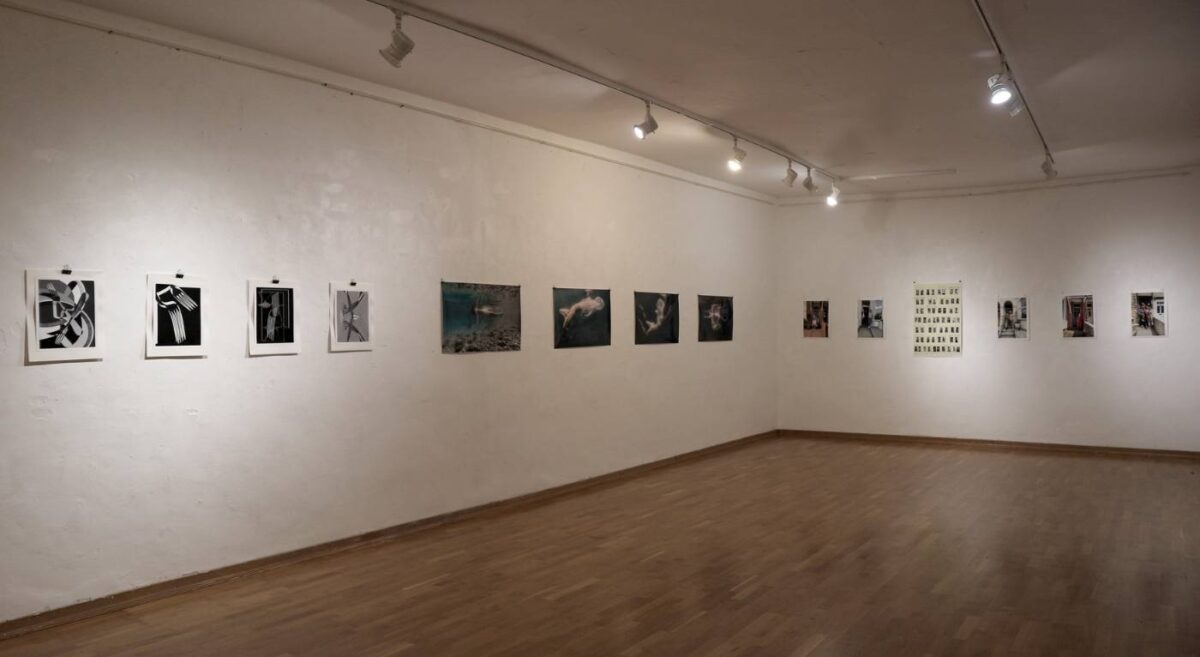





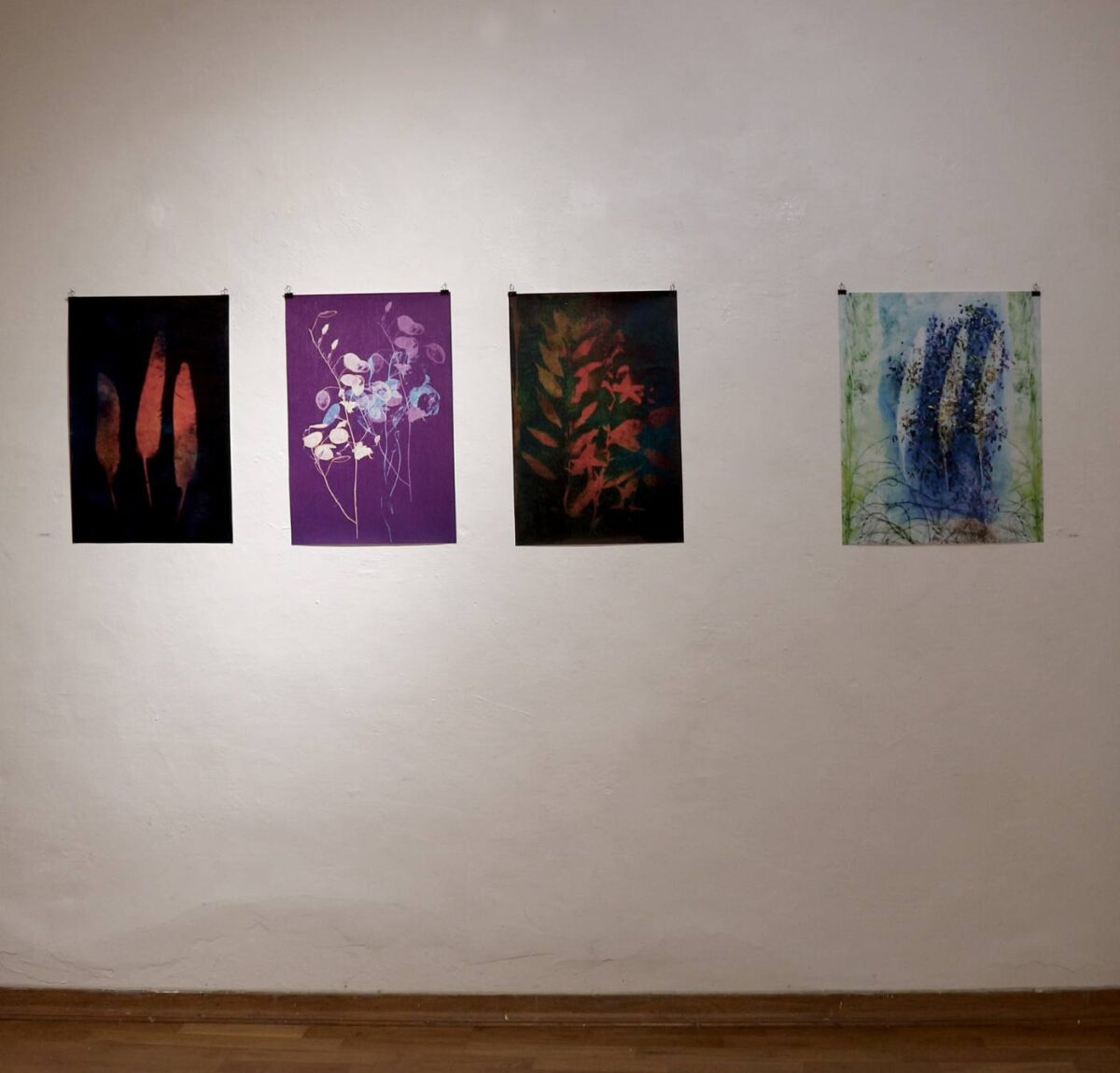
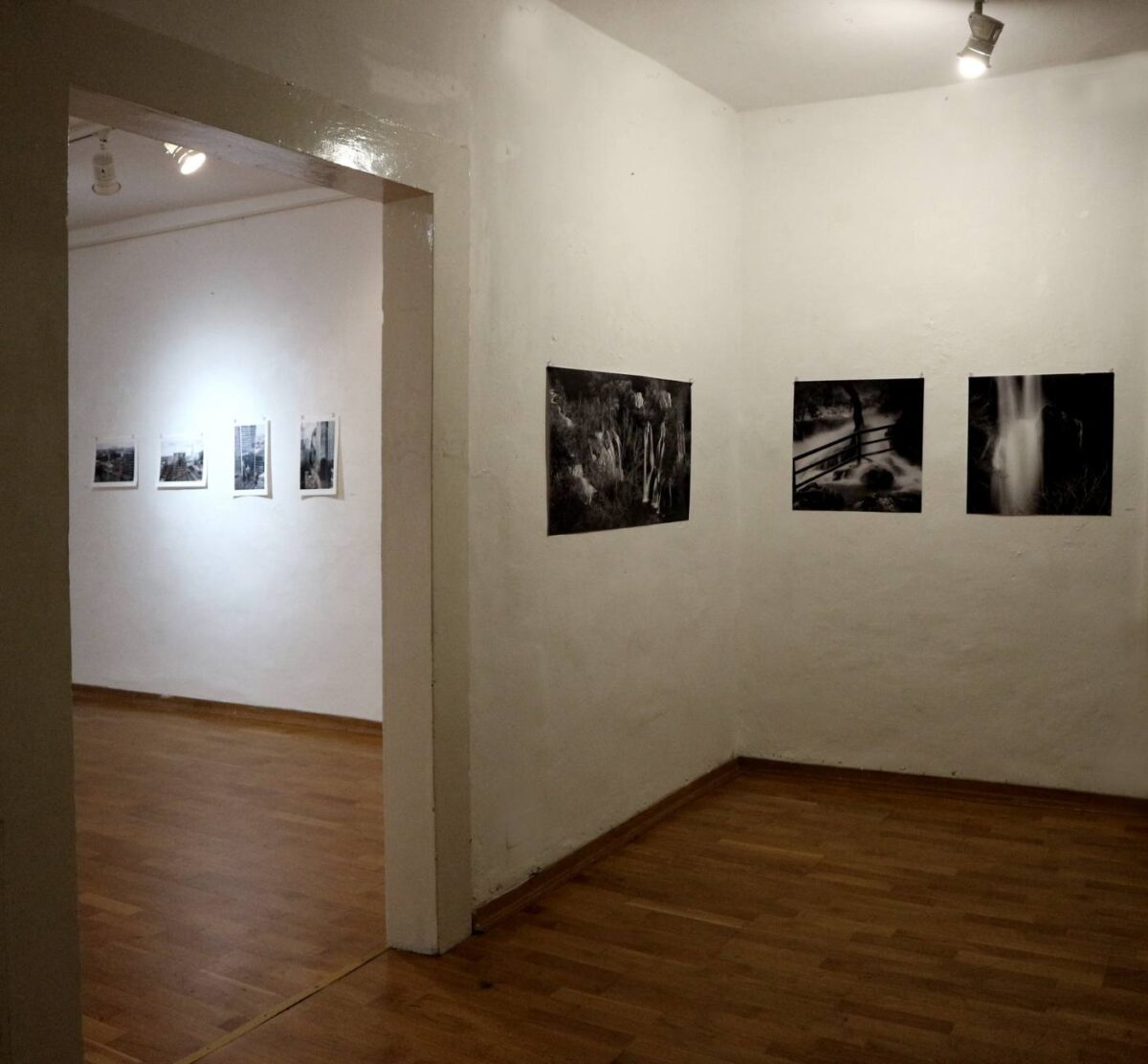




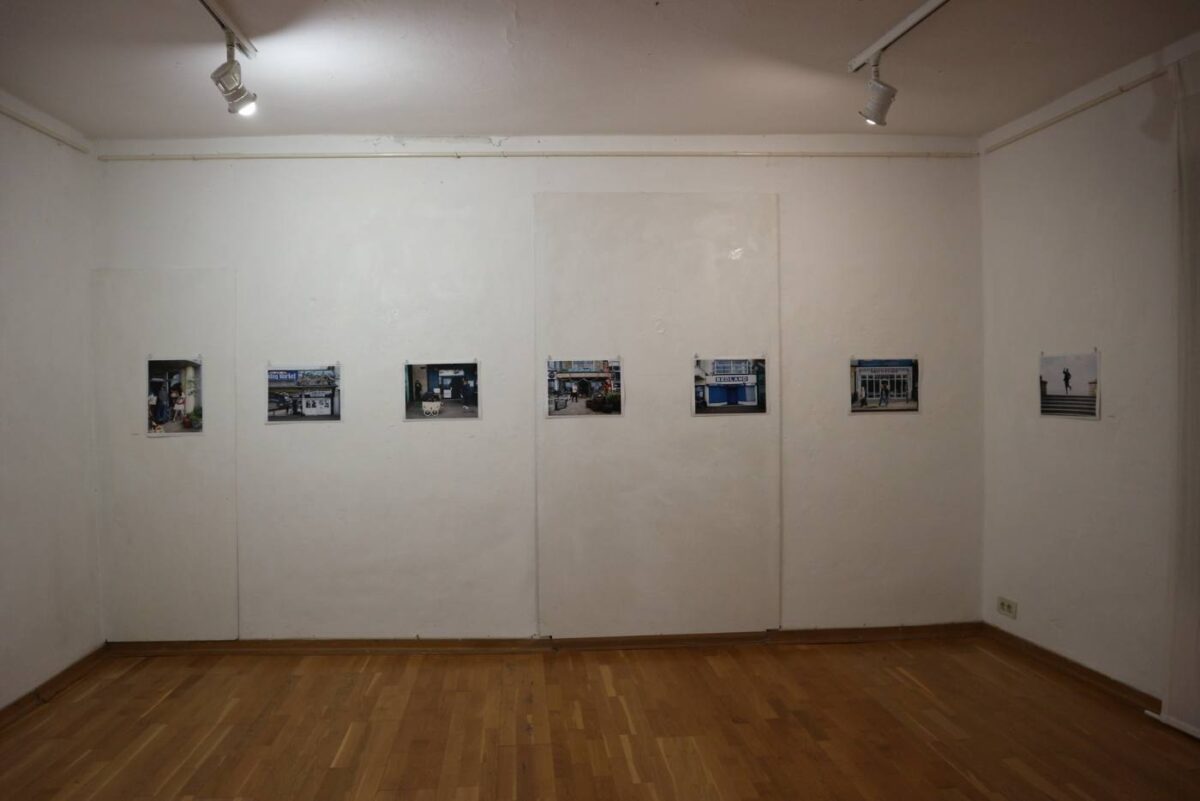
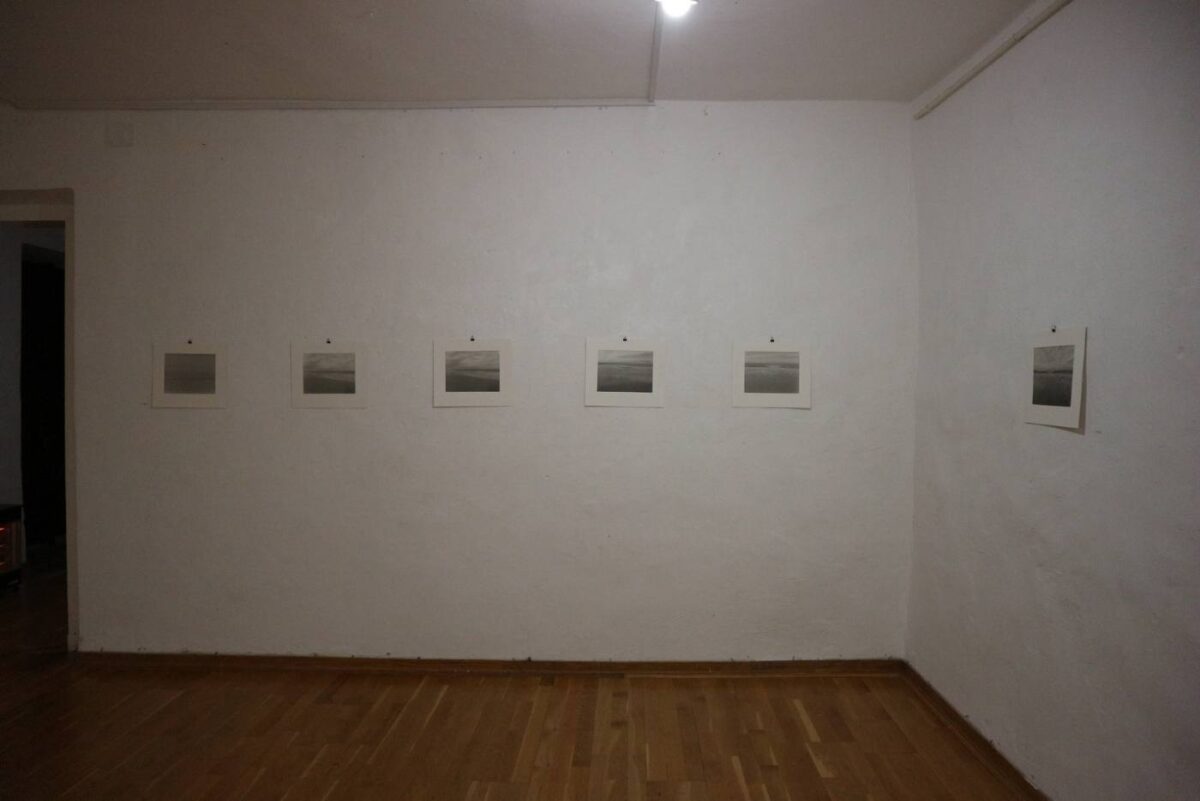
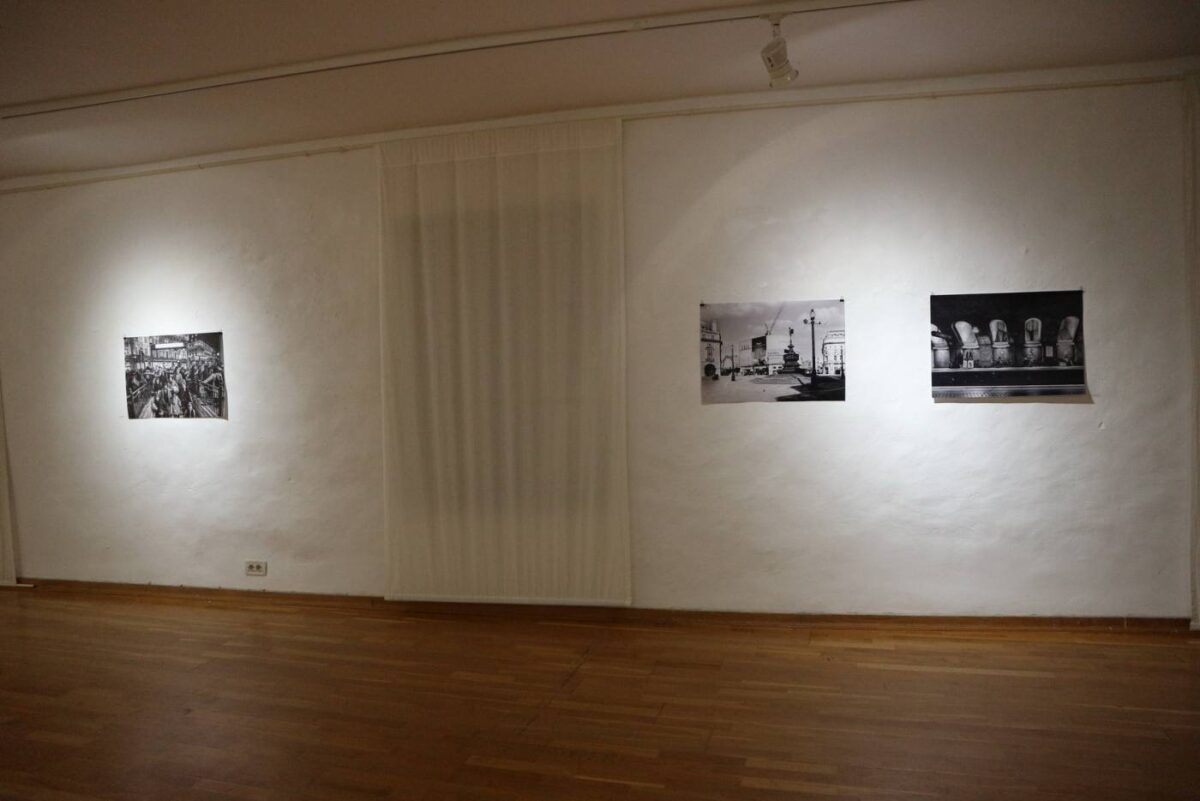
City Gallery Fonticus Grožnjan / Grisignana presents:
petak / venerdì / friday, 3. XI. 2023, u 19.00 h
BETWEEN FORM AND EXPERIENCE
collective photo exhibition
TRINAESTORO / THIRTEEN
Authors: Clive Bevan, Lizzie Brown, Mary Davis, Fernando, Tony Hale, Polly Hancock, Avril Harris, Gordana Johnson, David Lewis, Andrew Ridley, Norman Smith, Roger Towell, Duncan Unsworth
London – Grožnjan/Grisignana
Curator: Eugen Borkovsky
otvorenje / aperture / opening: petak / venerdì / friday, 3. XI. 2023, u 19.00 h
City Gallery Fonticus Grožnjan / Grisignana
BETWEEN FORM AND EXPERIENCE
It has already been written that fine arts and all other arts have a communication element built into them, regardless of whether it is a monologue or a dialogue. The entire history of artistic practice can be reduced to the decoding of messages that are intended to be understood and read by a known or unknown observer. Bearing this in mind this year, once again, thirteen authors related to the London art scene offer a series of author’s photographs. All individual collections of works are homogeneous in an artistic or meaningful way.
The motifs range from portraits/figures/nude, through directed or spontaneously observed objects, to urban or natural landscapes. These polyptychs, directly or indirectly, evoke the recent time in which they were created. Because we are witnessing a period of forcing uniformity, the photographers, through personal aesthetic notes, question obedience and challenge the suitability and consent to imposed ways of behaving, thinking and seeing.
In the recent past, the aggression of dictation has become evident in the field of healthcare. The population, under blackmail, listened to directed announcements that ordered, without support in legislation – the prohibition of freedoms. Today, the situation of constructed health problems, opinion control, is replaced by the imposition of support for two states. Through this, the entire World is being subjected to a hoax called democracy, but which has been transformed into subjection to multinational companies whose only goal is profit, regardless of the cost of individual human life. Banning different opinions/attitudes, banning breathing clean air, obstructing travel, revealed the aggression of capitalism, which is apparently collapsing in on itself. The middle class of the population no longer exists. There are proles who sell their strength and energy for whatever reason. Mega-facilities, religious manifestations, sales mega centers still operate. Big capital remained untouched. It seems that democracy is imposed. Instead of ‘democracy’, an amalgamate of ‘democracy’ and ‘dictatorship’ emerges – a ‘demotorship’
Thirteen games of forms, stories, comments, experiences are offered here. The authors instinctively realize that a scene, an event, a motive is not just a form, but an imaginary space filled with personal doubt. The individual experience is realized with the elements of artistic play with light, in which these authors cleverly and sometimes provocatively introduce a visual hint of questioning into the work. We thank them for the staging and warnings.
Eugen Borkovsky, X. 2023.
Clive Bevan presents his notes with light, taking water as a motif. More precisely; the more lively situations of watercourses: waterfalls. According to the titles of the works, the author recorded the photographs on the Krka River. Before us is a heterogeneous series: from the details of the overflow to wider panoramic motifs. Recording living nature, especially some of its phenomena – the persistent clash/play of liquid and hard element, is not easy to record without a documentary note. In our case, the author omits colour so all works, both details and panoramas, get a memory note. With black and white photography, the author achieves more pronounced contrasts and a wealth of midtones.
In some places, he focuses on the detail of the relationship between water flow, stone barriers and plants. The author tries to record the flow, the liveliness of water, not just its image. It succeeds in details and clips. In panoramic shots, the impression of amorphousness, softness, but also the strength of the water flow is achieved by capturing the mists and droplets of the scattering medium.
Lizzie Brown presents a documentary series of photographs. She too was a prisoner of the pandemic agenda in Britain. The author presents notes of a series of typical situations during imposed bans. There are combinations of groups of people or singles who were forced not to go out or to buy/give themselves dubious, untested medications.
Her photos carry the idea of portrait situations. Most are group, with two or more people, and some represent individuals. The author does not only include people in the frame, but also represents segments of the environment. Their close environments, homes, most often lobbies and entrances to residential units are leading the way. In a civilly determined milieu, whole families appear, either in the form of generationally diverse groups, but also individuals who live completely alone.
Everyone recorded with the photographic medium knows that they will be photographed, but most remain in spontaneous positions. Rarely does anyone carefully choose the positions for portraiture, as in the early days of the development of the photographic medium.
The author recorded sixty situations in her street. She usually photographs residents in front of their houses/apartments at the front door. She publishes the project and communicates with residents and neighbours through the Road WhatsApp group. The videos were shared, and people recognized them. Later, Zoe Lester, a graphic designer and one of the people photographed by Lizzie, helped the author to design a banner, which gathered all the photo-documentation on one surface. Thus, some sense of community developed in isolation. The imposed condition was alleviated to some extent. This is, in a broader sense, a warning that the human spirit is still indomitable, regardless of the aggression of the rulers.
Mary Davis presents a series of photographs of directed scenes. They are all abstract and represent combinations of geometrized objects. Linear, round, square, flat, pyramidal forms are shown in visual interaction. Some of the above are flat, and some are three-dimensional. In addition to the shape, there is a significant, but perfectly coordinated colour.
Although some of the parts of the composition can be recognized as separate objects, the author’s assemblages surpass such a sensation because of the relationships of the elements. In fact, the author seems to question our perception, somehow provoking memory. Thus, we immediately ignore possible recognition and perceive the components as a unique artistic situation.
The stable composition is achieved by expertly combining the shapes themselves, and the support is excellently achieved by the choice of colours. Compositions can be art objects even before starting the photographic process, so we can experience this series as documenting conceptual conformations. Mastery, imagination, moderation and consideration of combined forms are the features of these photographic notes.
Water is always a challenging and attractive motif. Most often, we visually rely on the surface of the water, its flow in the form of a river, stream, waterfall or sea in the form of a coastal landscape. This medium is also interesting to the visual researcher Fernando. His offer of a series of photographs represents the undersea. However, Fernando does not record the situation he finds in the water itself – as an element in contact with the coast or the sea-floor, but instead introduces a human motif into the medium. It is about a female person, her naked body which becomes the main motive of this series of photographic notes.
The artist and the model enter, dive into the liquid. The aesthetics of the naked body in the medium of water, the sea, is experienced differently. The body floats and moves significantly differently even from a skilled ballerina on dry land. Gravitational relationships change in this medium. Elements, apart from the experience of a person diving or swimming, and the relationship of the body and/or body parts such as hair, or objects such as textiles, obtain a different, unusual trajectory and position. In some shots, she is naked while swimming or relaxing, and in some we notice textile elements of her clothes.
Although it is about a naked body, it is not erotica, but a kind of free “flight” in a liquid substance. Through a series of shots, it changes, from more active to passive positions. The peculiarity of the location of the human body is not hidden. The author also uses situations that are determined by the presence of a human being in a liquid medium, such as a playful rocky ground/bottom or air bubbles that a person causes by breathing, exhaling.
The author says: “Under the surface of the sea, another world is hidden. A foreign world, where we are outsiders. We do not belong there, we cannot survive there. We are just guests…”
Tony Hale presents works characterized by strong colour and playful but stable composition. Motifs are plant forms that the author plays with. He does not capture the landscape, but focuses on smaller fragments, groups of leafy and/or floral details. The author extracts details from nature and processes them compositionally and colouristically. Through light manipulations on a sensitized surface, he produces effects that lean toward a painterly approach. Thus, some of the works are more similar to the results of work with watercolour, acrylic than photographic techniques. The results are brought to the edge of a kind of surrealism. It seems that such results could be achieved by photographing a work performed with painting techniques.
This author’s transmission game with the illusion of a technological approach is interesting. It is certainly a matter of questioning the visuality, from the realization to the impression on the observer. Because, for the realization, but also the experience of a work of art, the most important thing is not the technique itself, but the result.
Polly Hancock is engaged in observing and photographically recording unusual portrait situations. She represents four people in an unusual edition. Unusual make-up, separate scenes emphasized by visual aids and individual body features, and a completely exhibitionist presentation of the male character were recorded. Whilst the emphasis is on the portrait situations of the women, the details and/or the color of the environment are the carriers of the motif, and the male actor is presented quite differently.
We find the man in a truly bizarre interior. He is fully clothed and placed in the bathtub. But that’s not all: he has an open umbrella, an object against water, rain, moisture, which is inconsistent with his position in a vessel intended for the action of water. The entire photographic record abounds with other oddities. When with a person holding an umbrella, it is placed in a space that resembles a workshop, a possible studio… It is not dirty, but it has signs of untidiness, possible work disorder.
Of all the works, the last one described enters the realm of surrealism. Everything is real, but in a meaningful conflict. In the first works the gestures and appearance of the actors offer hints of difference, this last one goes far beyond small discrepancies and steps into a directed situation. The observer is left to his will and sensibility to experience this series of heterogeneous works.
Avril Harris offers a series of photographs of sea surface situations for viewing. She calls them “Quiet Sea”. The author’s experience is emphasized here because the photographs also show the waves, the natural rhythm of the sea. Nevertheless, the flat surface of the open sea, along with some uniform, but calm, ephemeral natural phenomenon, brings tranquility to the experience of the works. The uniformity of the surface is disturbed by the incoming waves, but their lines are aligned with the horizon. Only occasionally are they disturbed by the calm resistance of the sandy shore where they are lost in the porous sands or, by the breaking of the linear flow, by an interrupted rhythm, probably caused by some submarine barrier, shoal or rock. Even the cloud lines are almost parallel to the water surface line and/or the incoming waves.
This peace is emphasized by abandoning colours and realizing motifs with a rich gradation of tones. Thus, we are not entirely sure whether the works were carried out during the early morning or just after sunset. Or maybe on foggy days. In all cases, meditative scenes are offered to the viewer as a result of the author’s impression. In a completely ordinary event, she discovers the harmonious play of the natural phenomenon of the pacific sea.
Gordana Johnson presents herself with an excellent visual reflection. She records the situations of quite ordinary, everyday objects: plates and forks. But she sees them, recognizes them as completely special situations/combinations of forms, and through the photographic method of realizing the subject of the picture, offers them as forms brought to the edge of abstraction, or more precisely, a kind of surrealist approach.
Through stylization, processing turned towards a graphic impression, she plays with prosaic motifs, but also with the observer’s experience. On some of the works, at first we do not notice the transposed recognizable form. We are shocked by the recognition and forced to admit the initial reading error.
The artist does not lack imagination, so each work deserves special attention. In most of her works, the artist excludes colour. Only on one do we find introduced cold colour tones, boldly but expertly combined with a large part of the monochromatic area of the photograph. Despite the lack of colour on the other works, they do not lag behind in terms of expressiveness. In fact, the present graphic perception gives them an exceptional impression.
The names decipher the works. Only one title defines the series: “Lockdown Inspired – A Fork and its Shadows”. This brings another uneasy memory of a time of aggressive coercion and restriction of personal freedoms when we realized that the term democracy was transformed into the term democratura – a combination of the words democracy and dictatorship. We thank the author for this awareness of events in the time in which we all live.
Photographic works that are more documentary, but still characterized by personal fascination, are presented by David Lewis. The author presents attractive clips of contemporary touristic architectural buildings of the city and/or surroundings of Valencia in Spain. To the author, obviously, the most interesting building was designed by the famous architect Santiago Calatrava.
Compositionally, the works maintain a balance by showing us clips characterized by light architecture and the blueness of the Mediterranean landscape of sky and water. The impression is added by the shadows that, by themselves, form the architectural elements. The bold strides of the architect’s spatial conformations are impressive to the author of the photographs, so he offers them to us as well.
Human figures are presented in such a way that it seems to us that they are in the model of the object(s). One gets the impression of contemporary architecture, where the building itself is truly compositional and exceptional in form, like a good sculpture. However, when a man is introduced, for whom the object is intended, he interferes with the composition of the building. Only rare architects unite the idea of a space intended for people, where individuals or groups of people add visual value to an architectural building.
Andrew Ridley offers a series of photographs that represent the notes of his experience of the great city of London. The works that the author calls: “Going Underground” and “Baker Street” really successfully, impressively artistically, with a slight deviation from the documentary, express the author’s idea of experiencing urban situations. One work represents the station, and the other a staircase and the entry of numerous passengers into the subway.
These works can be divided into two groups. Those described document the urban commotion, the sequences of life in that world metropolis. One work looks back at the recording of attractive locations that are usually lively with people and/or traffic, but here these places are emptied, deserted. The first ones really represent the scenes of a living, hyper urban location. However, this work lacks the usual vibes of the city. In the name of this photo-note, the author reveals the reason: the ban on movement due to “pandemic”.
This recording evokes the recent time in which it was created, as it witnesses a period of aggressive imposition of undemocratic submission. The artist documents obedience, suitability, consent to imposed ways of behaviour and thinking. In the recent past, this has become evident in the field of healthcare. The population, under blackmail, listened to directed announcements that ordered, without support in legislation – the prohibition of freedoms. Today, the situation of constructed health problems is replaced by the imposition of support for two countries. Through both, an attempt is being made to subjugate the entire world to the western hoax called democracy, which has transformed into subjection to multinational companies whose only goal is profit, regardless of the cost of individual human life.
Norman Smith presents a collection of photographic works that exude the charm and thoughtful humour of a given situation. All scenes represent undirected reality in the exterior. The author selects and frames sequences that offer a series of narratives.
The author states: “The pictures are from Morecambe, Lancashire, England. The area, apart from being a popular summer resort from the mid-19th century became famous for its association with Eric Morecambe, the comedian, who took his stage name after the town…”
The author focuses on urban areas of the city that are not characterized by expensive shops or attractive historical sites. Even in an average environment, the author finds really interesting scenes. Most of the frames are occupied by urban, architectural buildings, often improvised advertising signs. Some, as a kind of epicenter of the motive, offer records, usually advertising ones. Others offer similar scenes combined with human characters. In one photo, we even notice a man in a dancing position, but we are not sure if it is a lively sculpture or a masked person. The author explains in the title that it is a statue of the aforementioned comedian.
Each of these notes should be read with light, re-examined for the offer of elements. The situations presented always offer some unexpected but non-tendential weirdness. It is manifested through facades, lobbies, objects and/or shapes that the author takes into the frame. In addition, human characters are also recorded in interesting situations, movement or movements that often follow the environment.
Roger Towell calls his series “Urban Patterns”. In all the photographs, we find architectural details in relation to the sky, except for one work that favours the relation between contemporary and traditional, historical architecture.
The author boldly cuts out the building or temple, leaving room for the firmament. The wealth of clouds, celestial phenomena, even the traces of airplanes, are shown in harmony with the architectural buildings. Roger excludes colour and evokes retro associations. Although the works are black and white, the sky is still rich, but the details of the buildings remain contrasting or with a rich range of shadows.
All these procedures do not disturb the arrangement of the components of the cut-outs of reality and all the works are compositionally stable. He manages to achieve the illusion that the observer, trained in colour, perceives the works as a real state. But in this time of crisis of civilization, these works can be associated with a world without sun. Nevertheless, some recognizable and other lesser-known architectural creations are recorded here as an experience, not as a document. The author reveals his sensibility as an observer who experiences the environment, and offers this to the audience as well.
Duncan Unsworth (front page) challenges the viewer to explore with his gaze. In a dramatic, strictly geometrized, specific urban environment, he fits scenes that reveal humane, even lyrical associations. Through the outlines, we recognize human figures that somehow spoil the geometry of urban buildings.
The author notices random specular reflections on the glasses. Other, neighbouring buildings are always reflected, but the author focuses on recording the traces of human beings on transparent walls, glass-clad architectural buildings.
The observer has to look closely to discover everything that the author manages to combine in the format of the photograph. When people are dressed in brighter colours, we recognize them more easily. Overlapping forms, both buildings and people present, reflections of images in new reflections, sometimes lose track, and sometimes are brought to the fore, regardless of where they were in real space. Like some puzzles, these photos, although quite realistic, carry the idea of surrealism.
These visual illusions remind us of fractal existences. The author seems to announce the deceptiveness of reality. With this visual illusion of organized and at the same time random chaos, the author witnesses and interprets the experience of civilizational commotion. It doesn’t have to be a negative commotion, but it bombards us with light, shape, colour information. The author makes an excellent comment: “…people in the garden are reflected in the glass and appear ‘projected’ onto other buildings.” They remind us that the city was created for people…”
Eugen Borkovsky, X. 2023.
TRINAESTORO / THIRTEEN is a group of professional photographers and accomplished amateurs who have exhibited at numerous solo and group exhibitions, some with British and international awards. This exhibition in the Fonticus gallery is their fourth exhibition in Croatia. In order to express their vision of the world, the members of the group are distinguished by a surprising choice of subjects that are treated individually and originally, using photographic techniques. Most have embraced digital photography, with a minority remaining true to classic photography. The group considers the number 13 to be their lucky number.
Impressum:
Produkcija: Gradska galerija Fonticus Grožnjan, XI. 2023. Izdavač / Editore: Općina Grožnjan / Comune di Grisignana, HDLU Istre; Curator: Eugen Borkovsky – voditelj programa galerije; Lektura: Doris Pandžić; Design: Studio Borkovsky; Postav: Kurator, Fernando, D. B. Njapo; tel: 00385 99 252 33 72, e.mail: eugen.borkovsky@gmail.com; Tisak: Comgraf Umag, XI. 2023.
Info: www.akademija-art.hr
GROŽNJAN City of artists 1965 2023 GRISIGNANA Cittá degli artisti